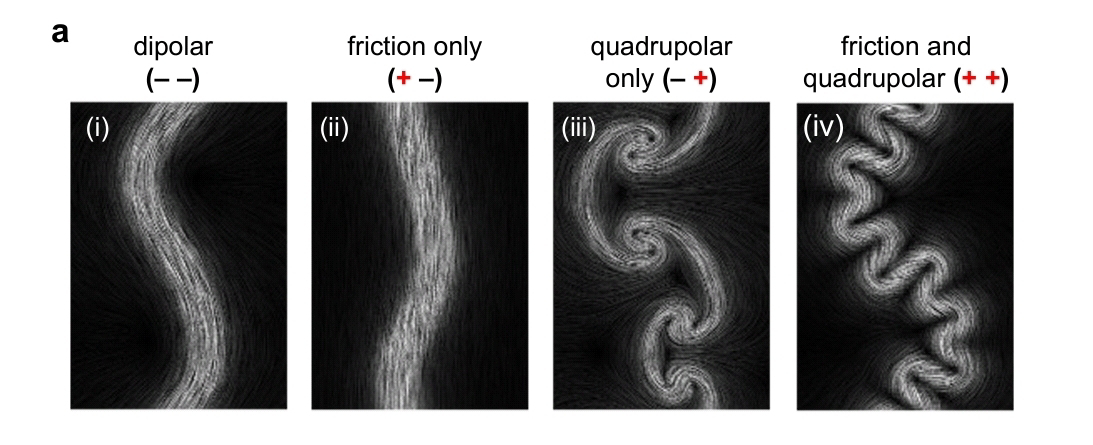Translate
sabato 26 marzo 2022
# gst life: apropos of critical points, love (at first sight and love from liking or friendship) might be a second-order phase transition.
venerdì 12 luglio 2024
# gst: apropos of the transition of order from chaos, a universal behavior near a critical point.
venerdì 28 febbraio 2025
# gst: apropos of the impact of noise, stochastic Kuramoto oscillators with inertia and higher-order interactions.
lunedì 23 settembre 2019
# gst: the hypothesis of a first order phase transition (a type of abrupt phase transition) to originate black holes observed by LIGO/Virgo in binary mergers.
<< To summarize, motivated by the ~10 M* (mass similar to that of the sun) black holes observed by LIGO/Virgo in binary mergers, (AA) entertained the possibility that the quark-gluon confinement phase transition was first order due to the effect of 6 light quarks. The larger number of light quarks, compared to the standard case, pushes the transition temperature below ∼100 MeV. The first order nature of the transition significantly improves the likelihood of forming primordial black holes and its lower temperature suggests that these black holes can potentially be as heavy as ∼10 M*, compared to ∼M* for the standard QCD transition. >>
Hooman Davoudiasl. LIGO/Virgo Black Holes from a First Order Quark Confinement Phase Transition. Phys. Rev. Lett. 123, 101102. Sep 6, 2019. https://journals.aps.org/prl/abstract/10.1103/PhysRevLett.123.101102
Ingrid Fadelli. Theory proposes that LIGO/Virgo black holes originate from a first order phase transition. Sep 23, 2019. https://m.phys.org/news/2019-09-theory-ligovirgo-black-holes-phase.html
QCD = quantum chromodynamic
https://en.m.wikipedia.org/wiki/Standard_Model
sabato 6 maggio 2023
# gst: nematic order condensation and topological defects in inertial active nematics
sabato 22 febbraio 2025
# gst: order and chaos in systems of coaxial vortex pairs
martedì 16 luglio 2024
# gst: curiosity-driven search for novel behaviors.
lunedì 21 giugno 2021
# gst: apropos of transitions, reversing order-disorder of Janus nano particles confined in two dimensions
sabato 8 febbraio 2025
# gst: criticality and multistability in quasi-2D turbulence
sabato 27 gennaio 2024
# gst: intertwining order, disorder, and hierarchy
martedì 11 marzo 2025
# gst: emergent flocking in mixtures of antialigning self-propelled particles.
lunedì 5 maggio 2025
# gst: transitions of breakup regimes for viscous droplets in airflow.
venerdì 28 ottobre 2016
# s-gst-music: Hexacorda mollia inside acyclical order and disorder
<< A new composition for string quartet takes listeners on a journey into the weird world of soft matter >>
<< Hexacorda mollia revolves around the theme of order and disorder in soft matter—materials like liquid crystals and biological organisms that can be easily deformed by thermal fluctuations or an external stress, such as an electric or magnetic field. For many of these systems, this form of disorder is required to create ordered structures that can perform some function >>
<< Music is always going through various states of order to disorder and back again, in ways that [scientists] might recognize as phase transitions >>
Katherine Wright. Arts & Culture: A Quartet for Soft Matter. Physics 9, 92. Aug 5, 2016.









